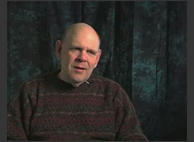| AOTA: Integrating Methodologies and Team Efforts | |
| ASA: Living with Autism | |
| Adam, Age 8 | |
| Ryan, Age 23 | |
| NICHCY: Tips for Parents & Educators (pdf) | |
| State Resources and Contact Info | |

Life After High School
One of the most challenging times for individuals with autism and their families is when they must transition from the security of federally-mandated services through the public school to the uncertainty of adult services. Questions about post-secondary education, vocational training and employment must be addressed. While entitlement to public education ends at 18, the IDEA requires that transition planning begin at 16, becoming a formal part of the student's IEP. Transition planning should involve the student, parents and members of the IEP team who work together to help the individual make decisions about his/her path.
Transition Planning
The school system can be the basis for your transition planning. A student receiving special education services in public schools has regular meetings with family and school staff to address the student's Individualized Education Program (IEP). Once a student is in high school, these meetings should begin to plan for the transition from high school to adult life. The federal law, Individuals with Disabilities Education Act (IDEA), requires that transition plans be included in a student's IEP by the time he or she is 16. IDEA defines transition services as a coordinated set of activities for a student that promotes movement from school to post-school activities, including:
- post-secondary education
- vocational training
- integrated employment (including supported employment)
- continuing and adult education
- adult services
- independent living, and
- community participation.
The coordinated set of activities must be based on the individual student's needs, taking into account the student's preferences and interests; and include needed activities in the areas of:
- instruction
- community experiences
- the development of employment and other post-school adult living objectives, and
- acquisition of daily living skills and function vocational evaluation.
Some states require transition planning to begin at an age younger than 16. Check with your state department of education to confirm the age your state requires transition planning and services to begin. It is important that families and schools start planning early to ease the transition for the person with autism and increase success and independence in adult life.
Individualized Transition Plan
A key term used when developing an individual's transition services is Individualized Transition Plan or ITP. This may be written as a specific area within the IEP or as a separate document that is also agreed upon by school officials and the parents. An article in Focus, a newsletter of the Autism Society of Northwest Ohio, "Transition Planning From School To Work" suggests four components of a transition plan:
- The plan, including goals and services, must be based on the individual needs, preferences, and skills of the person with autism
- Transition planning should be oriented to life after high school, not limited to what will be accomplished before leaving school
- There should be a master plan which includes long range goals and a coordinated set of activities for each
- The services provided should promote positive movement towards a life after school
Interagency collaboration is an important part of a student's transition IEP. A school system may work with agencies such as the local Department of Vocational Rehabilitation (VR), Social Security Administration (SSA), or independent and supported living centers. These agencies may provide training or direct services to assist the school with a student's transition. Parents should strongly encourage interagency collaboration as part of the IEP.
Thinking about Transition
When thinking about transition from high school, sometimes it is helpful to start the process with a list of questions to act as a springboard for discussion. Below we have provided such a list composed by a mother whose son has autism (Autism Advocate, March-April 1996, p. 16). Some parents use similar questions when preparing for an IEP meeting. Other families like to hold family meetings with siblings and the individual with autism so that they can all share in the planning:
- What does your child like to do?
- What can your child do?
- What does your child need to explore?
- What does your child need to learn to reach his or her goals?
- What about college (four years, community), vocational education, or adult education?
- How about getting a job (competitive or supportive)?
- Where can your child go to find employment and training services?
- What transportation will your child use?
- Where will your child live?
- How will your child make ends meet?
- Where will your child get health insurance?
Many people think of adulthood in terms of getting a job and living in a particular area, but having friends and a sense of belonging in a community are also important. To address these areas, we have added a few additional questions:
- What about friendship? Are supports needed to encourage friendship?
- Do people in the community know your son or daughter?
- Are supports needed to structure time for recreation? Exercise?
- Does your child have any special interests that others may share as a hobby?
- Can you explore avenues for socializing such as religious affiliation or volunteer work?
It is also important that the transition process involves taking action. After identifying areas of interests and setting goals, one must take some active steps to meet those goals. For example, a student with autism with particularly sharp computer skills is dismissed from school early a few days a week to work with an aide at a data processing office. This position was acquired through the vocation rehabilitation office, and they continue to provide needed support. Before beginning this job, the student was taught appropriate office social skills and important office procedures such as using a time clock.
Another student who prefers to be outdoors is more suited to work with a community clean-up project than in an office. Again, this emphasizes the need to develop a plan tailored to each individual's skills and preferences. Many professionals and families believe that three or four different experiences can be helpful in assessing a student's desires and capabilities while he is still in high school. The bottom line for all students is to prepare them for their lives after high school, whether that involves employment or further education.
The National Information Center for Children and Youth with Disabilities has a Transition Summary series that helps families and students with disabilities focus on taking definite steps toward a successful transition. We have adapted a portion of NICHCY Transition Summary, No. 7, September, 1991, below.
In Junior High School: Start Transition Planning
- Become involved in career exploration activities.
- Visit with a school counselor to talk about interests and capabilities.
- Participate in vocational assessment activities.
- Use information about interests and capabilities to make preliminary decisions about possible careers: academic versus vocational or a combination.
- Make use of books, career fairs, and people in the community to find out more about careers of interest.
In High School: Define Career/Vocational Goals
- Work with school staff, family, and people and agencies in the community to define and refine transition plan. Make sure that the IEP includes transition plans.
- Identify and take high school courses that are required for entry into college, trade schools, or careers of interest.
- Identify and take vocational programs offered in high school, if a vocational career is of interest.
- Become involved in early work experiences, such as job try-outs, summer jobs, volunteering, or part-time work.
- Re-assess interests and capabilities, based on real world or school experiences. Is the career field still of interest? If not, re-define goals.
- Participate in on-going vocational assessment and identify gaps of knowledge or skills that need to be addressed. Address these gaps.
If you have decided to pursue post-secondary education and training prior to employment, consider these suggestions:
- Identify post-secondary institutions (colleges, vocational programs in the community, trade schools, etc.) that offer training in career of interest. Write or call for catalogues, financial aid information, and application. Visit the institution.
- Identify what accommodations would be helpful to address the individual's special needs. Find out if the educational institution makes, or can make, these accommodations.
- Identify and take any special tests (e.g., PSAT, SAT, NMSQT) necessary for entry into post-secondary institutions of interest.
- In this is the individual's last year of secondary school, contact VR and/or SSA to determine eligibility for services or benefits.
After High School: Obtain Your Goals
- If eligible for VR services, work with a VR counselor to identify and pursue additional training or to secure employment (including supported employment) in your field of interest.
- If eligible for SSA, find our how work incentives apply to the individual.
- Contact agencies that can be of help: state employment offices, social services offices, mental health departments, disability-specific organizations. What can these agencies offer?
- Also find out about special projects in your vicinity (e.g., Projects with Industry, Project READY, supported employment demonstration models, etc.). Determine eligibility to participate in these training or employment programs.
- Continue to work through the plan. Follow through on decisions to attend post-secondary institutions or obtain employment.
The transition process is a complex one with many decisions to be made. A student's options after high school can be increased by a good transition plan during school. When a student is given the opportunity to experience different settings and develop work appropriate skills, he/she will be able to choose the best path. A good transition plan allows parents, school officials, and agency personnel to work together to make these opportunities available.
Many families across the U.S. find that there are shortages in services for adults on the autism spectrum once they have aged out of school. A Call to Action - Position Paper on The National Crisis in Adult Services for Individuals with Autism: A Call to Action.



